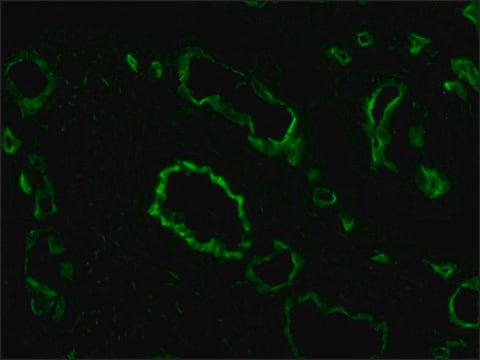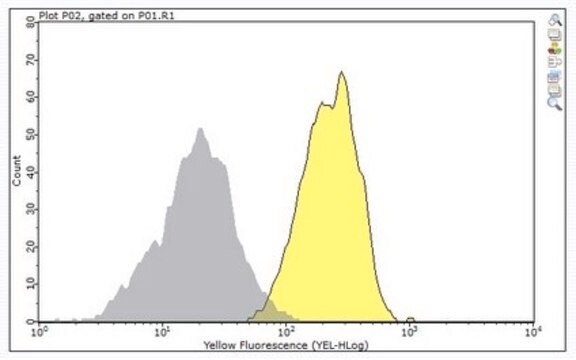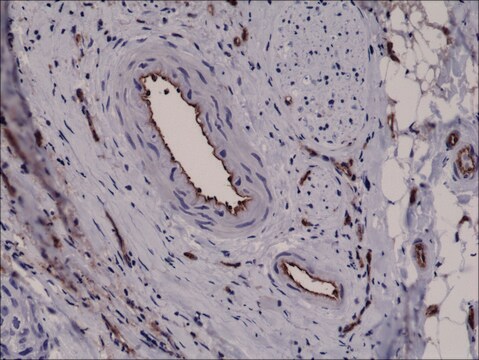CBL1337-I
Anti-PECAM-1 Antibody, clone 390
clone 390, from rat
Sinônimo(s):
Platelet endothelial cell adhesion molecule, CD31, PECAM-1
About This Item
Produtos recomendados
fonte biológica
rat
Nível de qualidade
forma do anticorpo
purified immunoglobulin
tipo de produto de anticorpo
primary antibodies
clone
390, monoclonal
reatividade de espécies
mouse
técnica(s)
flow cytometry: suitable
immunofluorescence: suitable
immunoprecipitation (IP): suitable
neutralization: suitable
Isotipo
IgG2aκ
nº de adesão NCBI
nº de adesão UniProt
Condições de expedição
ambient
modificação pós-traducional do alvo
unmodified
Informações sobre genes
mouse ... Pecam1(18613)
Categorias relacionadas
Descrição geral
Especificidade
Imunogênio
Aplicação
Immunofluorescence Analysis: A representative lot localized PECAM-1 immunoreactivity by fluorescent immunohistochemistry staining of murine embryo cryosections (Baldwin, H.S., et al. (1994). Development. 120(9):2539-2553).
Immunoprecipitation Analysis: A representative lot immunoprecipitated the 120-130 kDa exogenously expressed PECAM-1 ∆12,15 construct from transfected murine L-cells (Baldwin, H.S., et al. (1994). Development. 120(9):2539-2553).
Neutralizing Analysis: A representative lot inhibited the aggregation of murine L-cell transfectants expressing wild-type and ∆12,15, but not ∆14,15, murine PECAM-1 constructs (Baldwin, H.S., et al. (1994). Development. 120(9):2539-2553).
Clone 390 is also available as FITC conjugate (Cat. No. CBL1337F) for direct immunofluorescent staining in flow cytometry, immunocytochemistry and immunohistochemistry applications.
Cell Structure
Qualidade
Flow Cytometry Analysis: 2 µL of this antibody detected PECAM-1-positive monocytes among one million mouse splenocytes.
Descrição-alvo
Ligação
forma física
Armazenamento e estabilidade
Handling Recommendations: Upon receipt and prior to removing the cap, centrifuge the vial and gently mix the solution. Aliquot into microcentrifuge tubes and store at -20°C. Avoid repeated freeze/thaw cycles, which may damage IgG and affect product performance.
Outras notas
Exoneração de responsabilidade
Não está encontrando o produto certo?
Experimente o nosso Ferramenta de seleção de produtos.
Código de classe de armazenamento
12 - Non Combustible Liquids
Classe de risco de água (WGK)
WGK 2
Ponto de fulgor (°F)
Not applicable
Ponto de fulgor (°C)
Not applicable
Certificados de análise (COA)
Busque Certificados de análise (COA) digitando o Número do Lote do produto. Os números de lote e remessa podem ser encontrados no rótulo de um produto após a palavra “Lot” ou “Batch”.
Já possui este produto?
Encontre a documentação dos produtos que você adquiriu recentemente na biblioteca de documentos.
Nossa equipe de cientistas tem experiência em todas as áreas de pesquisa, incluindo Life Sciences, ciência de materiais, síntese química, cromatografia, química analítica e muitas outras.
Entre em contato com a assistência técnica






